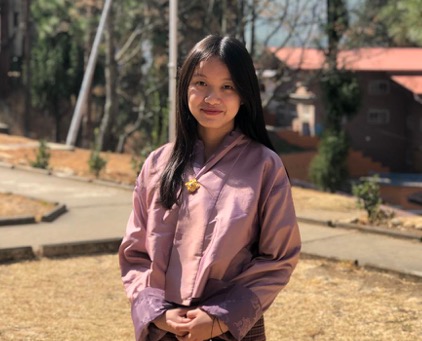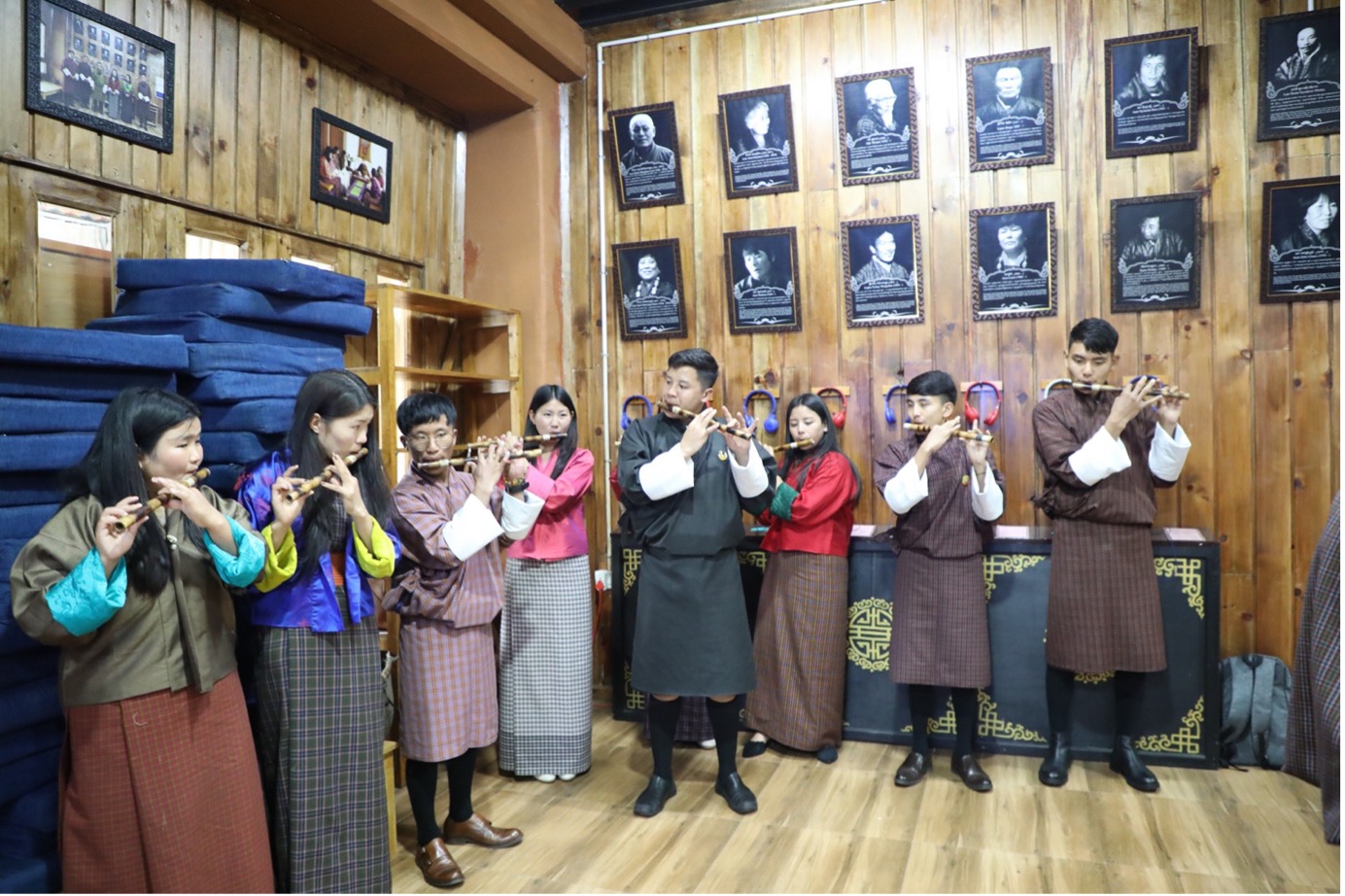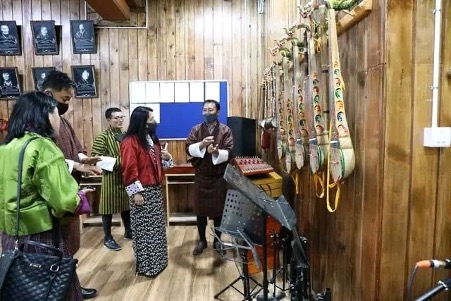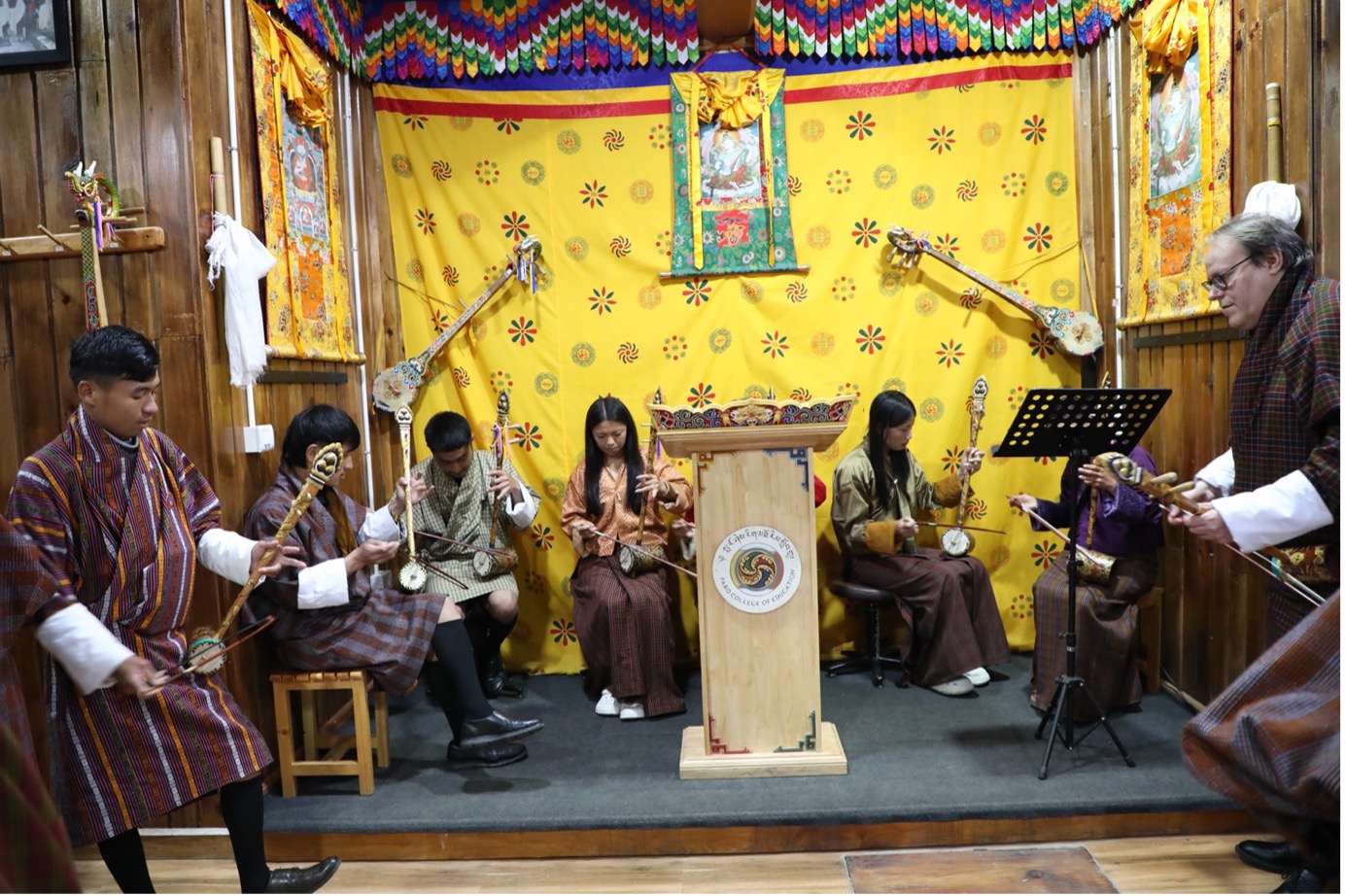
Tshering Denkar
Me and My Flute
“Eww, this class and this thing!” I clearly remember saying that as I placed the colourful stringed Dramgyoen (traditional Bhutanese lute) down in frustration, completely drained after yet another struggle to get the notes right. I must have repeated that phrase a dozen times or maybe more. At the time, nothing about learning music felt exciting. If anything, it felt like a burden I didn’t sign up for.
This all unfolded in one corner of our college campus – the Nyencha Room (music room), part of the Heritage Education and Professional Development Centre (HEPDC). The center plays a key role in preparing future teachers like us to value and carry forward our culture through four main focus areas: traditional music, arts and crafts, theatre, and Driglam Namzha (Bhutanese etiquettes). But for today, let’s talk just about the music room.

Located near the entrance of the college, the Nyencha Room offers a calm and pleasant space for learning traditional music. It has a traditional Bhutanese architecture on the outside with a soft, modern touch inside. It’s cozy, with cushions, sofas, and some books neatly placed for students to relax and practice music in comfort. While I wouldn’t call it my favourite place on campus, it’s certainly a space that holds many strong memories for me.

Right outside the room, there are well-paved cemented areas with flowers in bloom and a stone carving of Jetsuen Dolma that fills the place with her blessings and presence. A little to the side, there’s a grassy patch where students often sit under the open sky, letting their fingers move with the rhythm of the wind and the gentle sound of the river flowing nearby. Just around the corner stands another stone carving, this one of Zhabdrung Rinpoche along with a mani dungkhur that spins in silence, and sometimes with students and other visitors constantly spinning it. The entire space feels peaceful, grounding, and quietly sacred.
Our music classes were led by Mr. Yohan, a passionate and humble educator from Sweden who isn’t just well-versed in modern instruments like the guitar and piano but is also deeply knowledgeable about Bhutanese traditional music. Alongside him, Mr. Tshering Penjor also guide us with great patience. His skill with traditional musical instruments is so impressive that I often found myself watching in quiet awe. Their dedication iss undeniable, but for someone like me, with zero music background, it was tough.

We were introduced to four traditional instruments – Dramgyoen, Pchiwang (similar to the violin), Yangchen (similar to a xylophone), and the flute. We had to pass a demonstration test every two weeks before moving to the next instrument. The Dramgyoen, in particular, tested my patience. I practiced until my hands ached and my breath ran out. I didn’t visit the music room much in my free time, but when I did, it was mostly to catch up or get through the next test.
So yes, I struggled. I hesitated. There were moments I doubted myself and questioned why I had to go through it all. But looking back, this very music room reminded me that I am capable, that with effort and an open mind, I can go beyond what I thought were my limits. It wasn’t just about learning music. It was about discovering a part of myself I hadn’t explored. The only thing we truly need is the willingness to try, to embrace even what feels unfamiliar. So yes… I’m a survivor, not of the music room, not of the weekly tests, but of my own false belief that I couldn’t do this or that. Because at the end of the day, what stays with me is not the struggle, but the soft, funny and meaningful memories from that room and instruments. And yes, not to forget- The beautiful scenery which was filled with our frustration turned into laughter.
![]()
